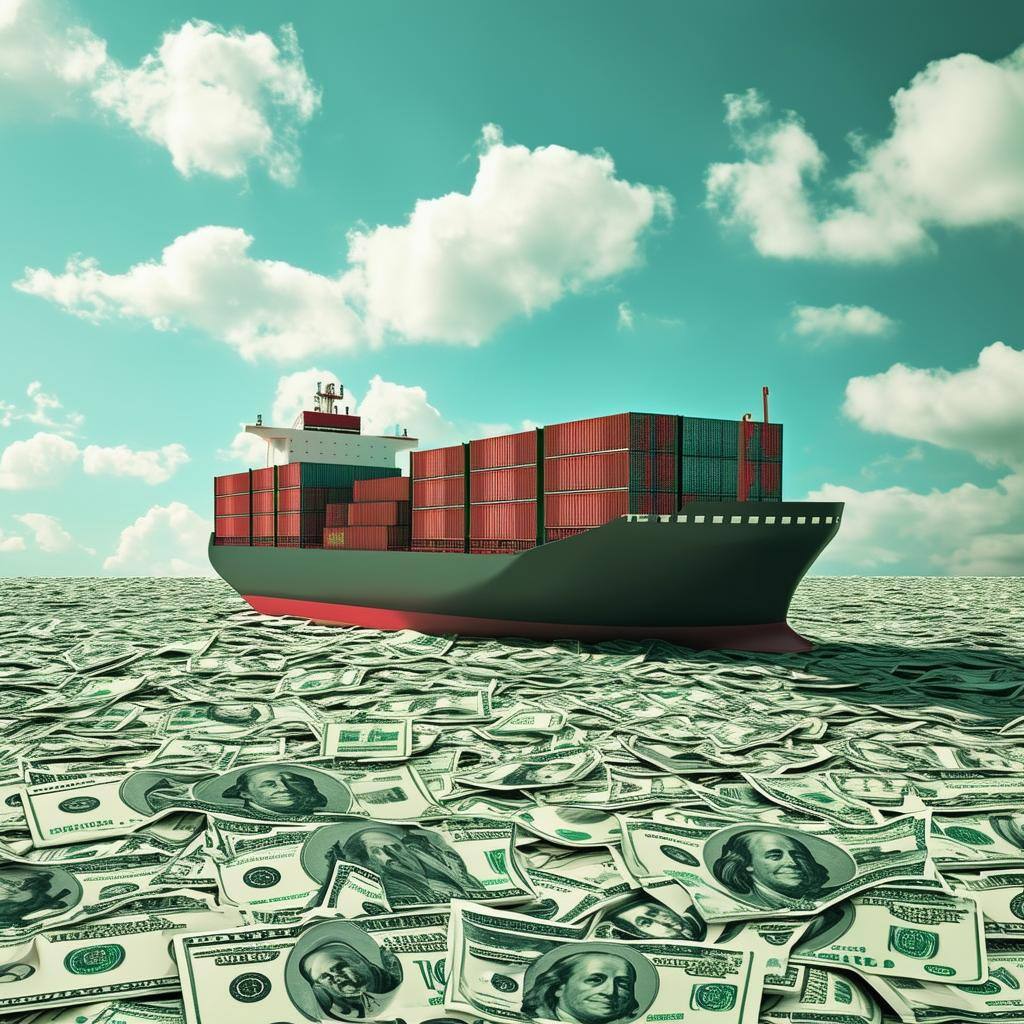Shipping companies will be forced to raise prices to stay profitable if the union prevails

Stocks closed in the green yesterday after a rough ride in which Chairman Powell turned down the volume at the rate-cut partiers’ rowdy rave. Don’t worry rates are still going down but the Fed is in no hurry, according to the Head Fed himself.
The most dangerous game. I would love to say something like “I told you so,” but given that I really gave you like only one day’s notice… well, at least I gave you that. To be honest, I even observed in my note yesterday that many mainstream financial media outlets were not shedding much light on this most dangerous situation. I am, of course, referring to the International Longshoreman’s Association (ILA) union strike on the US’s East Coast and Gulf ports. Yes, it’s official, the existing ILA contract expired last night at midnight WHILE YOU SLEPT… well, I was sleeping. This didn’t just pop up out of nowhere; there were discussions that led to the ILA breaking negotiations back in June… JUNE. So now, 25,000 dockworkers have walked off the… um, docks, which handle some 25% of the US’s international trade.
According to JPMorgan Chase the shutdown will cost between $3.8 and $4.5 billion A DAY! That is not pocket change, no matter how you look at it. According to experts a 5-day strike could take a month to unravel. JPMorgan is not the only ones tossing big, billion-dollar figures about. Even the lowest I have found will have a noticeable impact on GDP. GDP, you know, the thing we have all been watching so carefully lately for fear that the US will slip into a recession… an un-soft landing. Ships have reportedly been sent away from the affected ports with many heading to Anchorage Alaska… as in A L A S K A. So then, how will those goods in the containers on one of those ships get to my local Costco? Oh, they will get there… eventually via land transport, which not only adds lead time, but also cost. It shouldn’t escape us that Christmas is just 85 days away with retailers - and the Hallmark Channel - already revving up. Oh, do you think that you can get around this snag because you are an online shopper? Think again, those goods destined for your favorite online retailer come into the US via the same ports as your favorite brick-and-mortar retailers. It is simply a mess, no matter how you slice it. While this strike may be a boon for struggling trucking companies, it will certainly cause some havoc for shipping companies. Ultimately, as I asserted yesterday, you and I will pay for all the additional cost borne by the retailers and manufacturers who will pay more for shipping and be forced to bloat inventories.
It should not be a surprise that the ILA chose this very moment to make a stand. With Presidential elections just around the corner no politician in their right mind would intervene with something like the Taft-Hartly act forcing a cool-down period. Both Biden and Trump have expressed support for the ILA in recent days. Unions typically also strike after the industry has had a period of prosperity. Let me just say before I go further, that unions do serve a very important role in worker rights especially in industries where those laborers can be exploited. With that out of the way, let’s get two facts on the table. Did you know that some dockworkers earn over $200,000 a year? Now, West Coast ILA members currently make more salary per hour than East Coast ones, so let’s just say there is some room for discussion.
I managed to listen to some of the speeches and interviews of ILA members who called out the fat-cat shipping companies which earned billions of dollars on their hard labor. So, have the shipping companies been taking advantage of the low-salaried workers while earning larger and larger profits in the past several years as has been argued? Well, let’s have quick look at Hapag-Lloyed, one of the largest container shipping companies in the world. It operates a fleet of some 250 vessels tracing its roots back to 1847. If you travel on the New Jersey Turnpike and have passed Port Elizabeth, you have surely seen some containers and ships bearing the company’s name. Looking back a number of years, it appears that the company did enjoy a jump in profits in 2021 and 2022. Indeed, shipping costs did spike to all-time highs throughout that period, playing a crucial role in the emergence of this last spate of inflation. Ok, so I guess companies like Hapag-Lloyed used the “discriminate if you can” doctrine to realize profit spikes. It’s just business. But shipping rates fell back to normal by 2023. Wait, why not just take a look at a chart of the company’s profits? Check it out then follow me to the finish.

Well, it can’t be clearer than this. One can clearly see the large income boosts in ’21 and ’22. What should also be clear is that 2023 saw a rather rapid decline. The transparent bars on the right are estimates for 2024 and 2025 which show a continued decline back to pre-pandemic levels. For the record, it is also true that the company’s stock rose by some +550% from the start of the pandemic through its peak in May of 2022. Though it has since declined, it is still around +135% higher than it was at the start of 2020. Getting back to the company’s net income, it should be clear that while those great profits were truly earned on the backs of the dockworkers, those profits were a flash in the pan. Therefore a +40% increase in wages to bring east coast rates even with west coast will surely impact the profitability of the company, which is clearly trending downward. What could you possibly do if you ran the company and saw your profitability decline further, due to labor cost increases? That is kind of a rhetorical question but let’s run with it. You can either fire a bunch of people and replace them with technology (also a key negotiating point in the current impasse) or you can… wait for it… wait for it… and… BOOM, you can raise prices to fill the gap. If shipping prices go up… well, you know where this is going. Did I mention that Chicago Fed President Austan Goolsbee specifically referenced the strike as possibly having a drag on the supply chain… uh oh, does he mean that he is worried about inflation (smaller cut in November) or worried that it will have a negative impact on the economy (bigger cut in November). In either case, this latest development will hang over the markets until it is resolved… plus another four weeks, according to experts.
YESTERDAY’S MARKETS

NEXT UP
- JOLTS Job Openings (August) is expected to show 7.693 million openings, slightly more than the prior period’s 7.673 million vacancies.
- ISM Manufacturing (September) may have rose to 47.5 from 47.2. UP IS GOOD HERE, down, not so much. It has been a flash point in recent releases.
- After the closing bell earnings: Nike and Lamb Weston Holdings.
.png)

